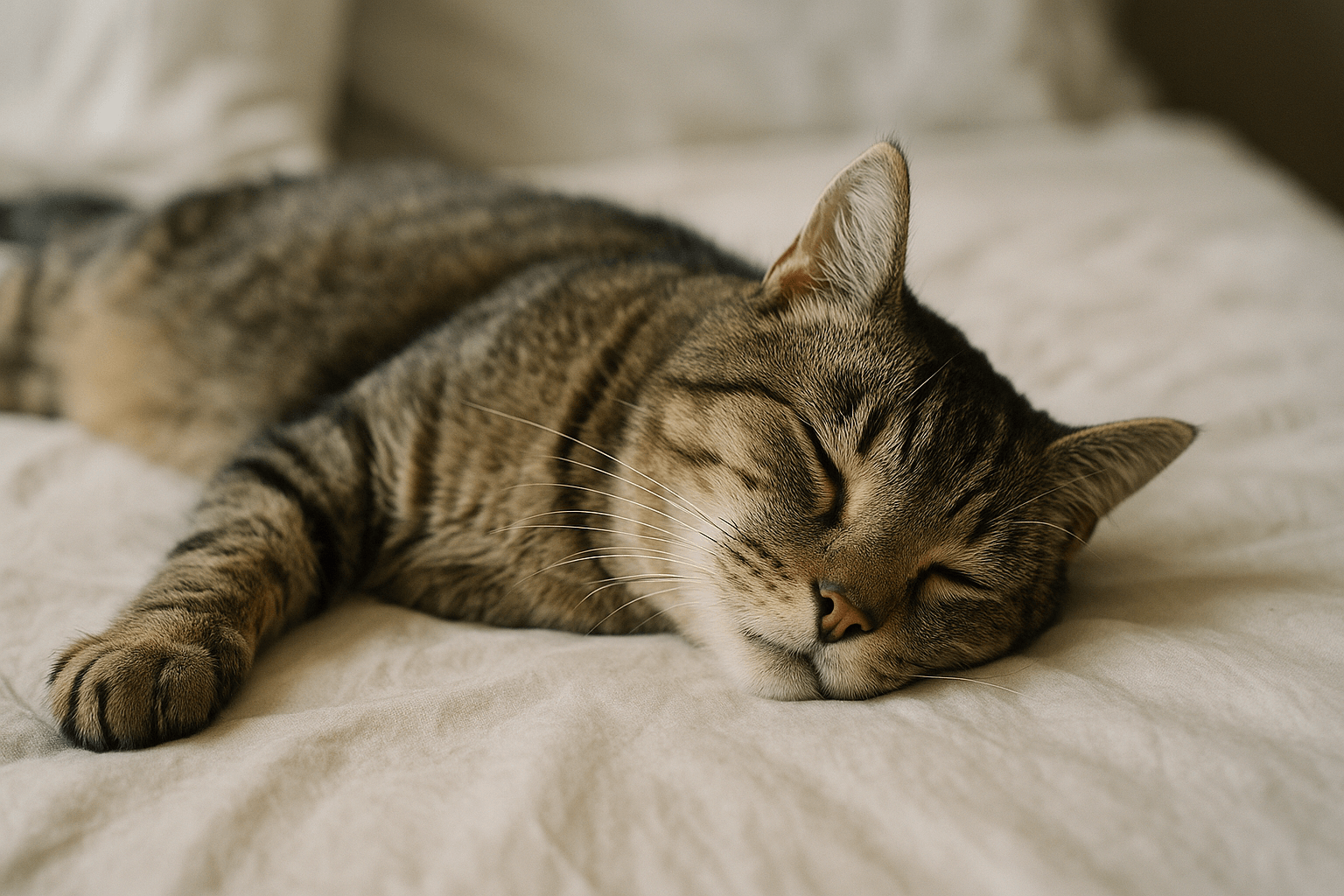Cat Epilepsy Treatment: Understanding and Managing Seizures in Cats
Epilepsy in cats is a neurological condition that can be both distressing for pet owners and challenging to manage. While seizures are relatively rare in felines compared to dogs, they can still occur due to various underlying causes, such as brain injuries, infections, or genetic predispositions. Fortunately, with proper diagnosis and treatment, many cats with epilepsy can lead happy, fulfilling lives. This blog post will explore the ins and outs of cat epilepsy treatment, including identifying symptoms, available therapies, and practical tips for supporting your furry friend through this condition. Whether you’re a concerned cat owner or simply seeking information, this guide will provide valuable insights into managing feline epilepsy effectively.
Recognizing the Symptoms of Cat Epilepsy
Early detection of epilepsy is crucial for effective treatment. Knowing the signs can help you seek veterinary care promptly and improve your cat’s quality of life. Here are some common symptoms to watch for:
Sudden Loss of Consciousness:
During a seizure, your cat may collapse and appear unresponsive to stimuli.Uncontrolled Muscle Movements:
Twitching, jerking, or paddling motions with their legs are hallmark signs of a seizure.Drooling or Foaming at the Mouth:
Excessive salivation is often observed during or after a seizure episode.Behavioral Changes Before or After Seizures:
Some cats exhibit unusual behavior, such as restlessness, hiding, or confusion, before or after a seizure.Temporary Blindness or Disorientation:
Post-seizure, cats may seem disoriented or have difficulty navigating their surroundings.
If you notice any of these symptoms, it’s essential to consult a veterinarian immediately to determine the underlying cause and begin appropriate treatment.
Treatment Options for Cat Epilepsy
Managing epilepsy in cats involves a combination of medical interventions and lifestyle adjustments. The goal is to reduce the frequency and severity of seizures while maintaining your cat’s overall well-being.
Anti-Seizure Medications:
Veterinarians often prescribe medications like phenobarbital or levetiracetam to control seizures. These drugs work by stabilizing electrical activity in the brain.Regular Monitoring and Blood Tests:
Cats on anti-seizure medications require routine blood tests to monitor liver function and ensure the dosage remains safe and effective.Dietary Adjustments:
A balanced diet rich in omega-3 fatty acids and antioxidants may support brain health and reduce seizure triggers.Stress Reduction Techniques:
Minimizing stress through environmental enrichment and calming routines can help prevent seizure episodes.Alternative Therapies:
Some veterinarians recommend supplements like CBD oil or acupuncture as complementary treatments, though evidence varies.
With a tailored treatment plan, most cats with epilepsy can experience fewer seizures and improved quality of life.
Check this guide 👉Epilepsy in Cats: Best 7 Expert Tips!
Check this guide 👉Nystagmus in Cats: Best 7 Health Tips!
Check this guide 👉Understanding Hyperthyroidism in Cats: Best 7 Expert Tips!

Medical Treatments for Cat Epilepsy | Lifestyle Adjustments for Managing Seizures |
|---|---|
Phenobarbital (common anti-seizure drug) | Reducing household stressors |
Levetiracetam (alternative medication) | Providing a calm, predictable environment |
Regular blood tests for monitoring | Offering mental stimulation through play |
Potential use of CBD oil | Feeding a brain-supportive diet |
Emergency sedatives for severe cases | Avoiding sudden changes in routine |
How to Support Your Cat During a Seizure
Witnessing your cat having a seizure can be alarming, but staying calm and prepared is essential. Here’s how you can help your cat during and after an episode:
Stay Calm and Observe:
Keep a safe distance and avoid touching your cat unless necessary, as they may unintentionally bite or scratch during the seizure.Create a Safe Environment:
Remove objects or hazards nearby that could injure your cat during uncontrollable movements.Time the Seizure:
Note how long the seizure lasts—episodes lasting more than five minutes require immediate veterinary attention.Comfort After the Episode:
Once the seizure ends, gently comfort your cat and keep them in a quiet, dimly lit space to recover.Document Details for the Vet:
Record the duration, frequency, and characteristics of seizures to provide valuable information to your veterinarian.
By taking these steps, you can ensure your cat’s safety and gather critical data to aid in their ongoing treatment.
Understanding the Causes of Cat Epilepsy
Identifying the root cause of epilepsy is vital for effective management. While idiopathic epilepsy (no known cause) exists, other factors may contribute to seizures in cats.
Brain Injuries or Trauma:
Physical trauma to the head can result in seizures due to damage to brain tissue.Infections or Inflammation:
Conditions like meningitis or encephalitis can trigger neurological symptoms, including seizures.Toxins or Poisoning:
Exposure to certain toxins, such as pesticides or household chemicals, can lead to seizure activity.Metabolic Disorders:
Issues like liver disease or diabetes can affect brain function and increase seizure risk.Genetic Predispositions:
Some breeds may be more prone to epilepsy due to inherited traits.
Understanding these potential causes allows veterinarians to tailor treatment plans and address underlying health issues effectively.
Tips for Administering Medication to Cats
Giving medication to a cat can be tricky, especially if they resist. These tips can make the process smoother and less stressful for both you and your pet.
Use Pill Pockets or Food Wraps:
Hiding pills in tasty treats can encourage your cat to take their medication willingly.Crush Pills into Wet Food:
Crushing tablets and mixing them with wet food can mask the taste and texture of the medication.Use a Pill Dispenser:
A pill dispenser tool helps place the medication directly at the back of your cat’s throat for easy swallowing.Reward with Treats or Playtime:
Positive reinforcement after administering medication reinforces cooperation over time.Ask Your Vet for Liquid Alternatives:
If pills prove too difficult, inquire about liquid formulations that may be easier to administer.
With these strategies, you can ensure your cat receives their medication consistently and without unnecessary stress.
Creating a Stress-Free Home Environment for Cats with Epilepsy
Reducing stress is critical for managing epilepsy in cats. A calm and predictable environment can help minimize seizure triggers.
Establish a Routine:
Consistent feeding, play, and sleep schedules provide stability and reassurance for your cat.Limit Loud Noises:
Sudden loud sounds can startle your cat and potentially trigger a seizure. Use white noise machines or close windows to dampen external noise.Provide Safe Spaces:
Designate cozy, quiet areas where your cat can retreat when feeling overwhelmed or tired.Minimize Household Changes:
Avoid rearranging furniture or introducing new pets abruptly, as these changes can increase stress levels.Engage in Gentle Play:
Interactive toys and gentle play sessions stimulate your cat mentally and physically without overexertion.
By fostering a peaceful home environment, you can help your cat feel secure and reduce the likelihood of seizure episodes.
Monitoring Your Cat’s Progress Over Time
Tracking your cat’s condition is essential for gauging the effectiveness of their treatment plan. Here’s how to stay organized and proactive in managing their epilepsy.
Keep a Seizure Diary:
Document each episode, noting its duration, intensity, and any potential triggers.Track Medication Side Effects:
Monitor changes in behavior, appetite, or energy levels that may indicate adverse reactions to medication.Schedule Regular Vet Visits:
Routine check-ups allow your vet to assess progress and adjust treatment as needed.Observe Behavioral Patterns:
Pay attention to subtle changes in mood or activity that might signal improvements or setbacks.Communicate Openly with Your Vet:
Share updates and ask questions during appointments to ensure your cat receives personalized care.
By staying vigilant and proactive, you can optimize your cat’s treatment plan and enhance their overall well-being.
Frequently Asked Questions About Cat Epilepsy Treatment
What should I do if my cat has a seizure?
Stay calm, ensure their safety, and time the seizure. Contact your vet if it lasts longer than five minutes or occurs frequently.
Can epilepsy in cats be cured?
Idiopathic epilepsy cannot be cured but can often be managed with medication and lifestyle adjustments.
Are there side effects from anti-seizure medications?
Yes, medications may cause side effects like lethargy, increased thirst, or appetite changes. Regular monitoring helps minimize risks.
Can diet influence seizure frequency?
Certain diets, especially those high in omega-3s and low in allergens, may help reduce seizure triggers in some cats.
How often should I visit the vet for check-ups?
Cats on anti-seizure medications typically need check-ups every 6-12 months, depending on their condition and response to treatment.
Providing the Best Care for Cats with Epilepsy
Managing epilepsy in cats requires patience, vigilance, and collaboration with your veterinarian. While the condition can be challenging, advancements in treatment and supportive care offer hope for improving your cat’s quality of life. By recognizing symptoms early, adhering to prescribed treatments, and creating a safe, stress-free environment, you can help your feline companion thrive despite their diagnosis. Remember, your love and dedication make all the difference in ensuring your cat feels secure and cared for throughout their journey with epilepsy.
Why Is My Cats Second Eyelid Showing? Best 7 Expert Tips! Understand causes, health signs, and how to respond when your cat’s third eyelid becomes visible.
How Do I Know If My Cat Died Peacefully? Best 7 Expert Tips! Discover the quiet signs of a peaceful feline passing and find comfort in their final moments.
Cat Allergy Eyes: Best 7 Expert Tips! Discover why your eyes react to cats and learn proven strategies for relief—without giving up your feline friend.
Why Do Abyssinian Cat Colors Matter? Best 7 Expert Tips! Discover the genetics, rare hues, and care secrets behind Abyssinian coat colors for a healthier, happier cat.





